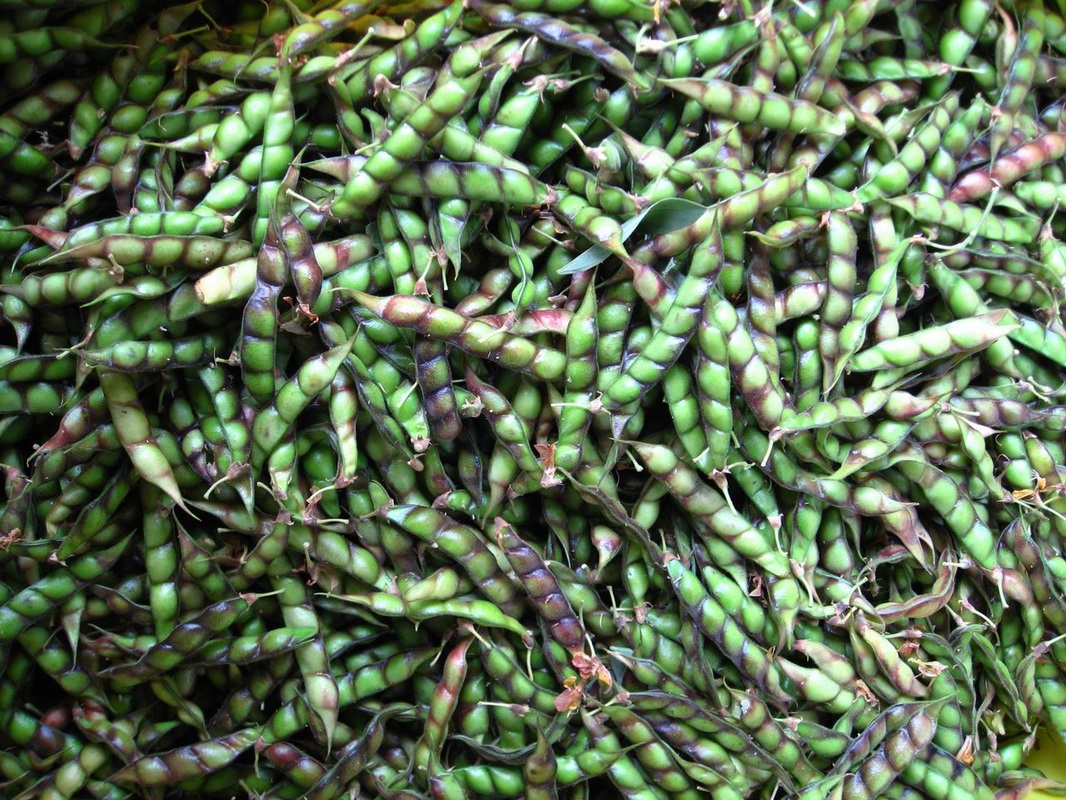The bush in the background of this picture is Cajanus cajan, the perennial legume, the pigeon pea.

On top of being full of fiber, protein and folate, the pigeon pea is another widely used plant in bush medicine. The leaves from the herb can provide relief from chicken pox and measles when boiled and added to a bath. Boiling the leaves with some water also has the ability to cure your cough. Boiling the root is also useful to induce vomiting should you ever have the unfortunate experience of getting food poisoning from fish.
The bush contains the phenolic compounds isoquercitrin, quercetin, and quercetin-3-methyl ether. These compounds have neuroprotective, cardioprotective, chemopreventive, antioxidant, anti-inflammatory, and anti-allergic properties which may explain some of the reason why the tea is so effective.
I hope you enjoy!
Sources:
, , & (2003) Phenolic compounds on the pod-surface of pigeonpea (Cajanus cajan), mediate feeding behaviour of Helicoverpa armigera larvae. Journal of Chemical Ecology 29: 811–821.
Hannah-Smith, Martha. "Bush Medicine in Bahamian Folk Tradition". Dodd Printers, Miami. 2006
.JPG)
No comments:
Post a Comment